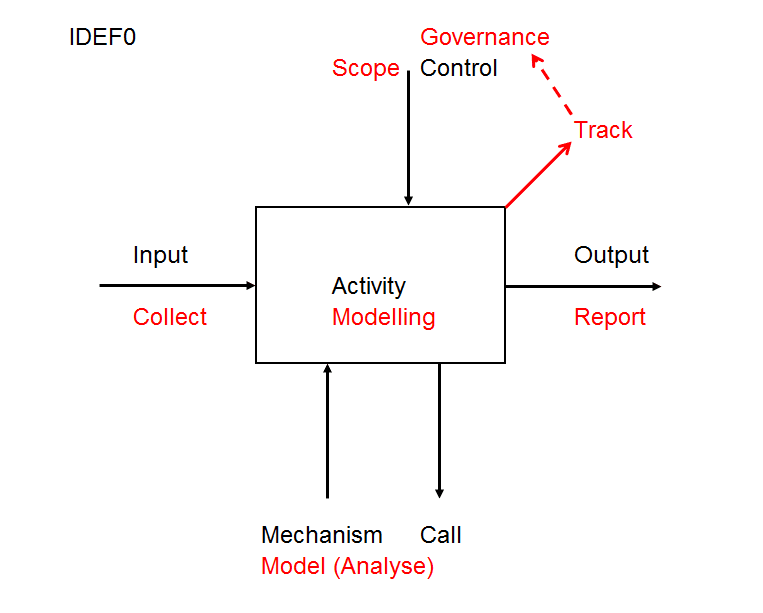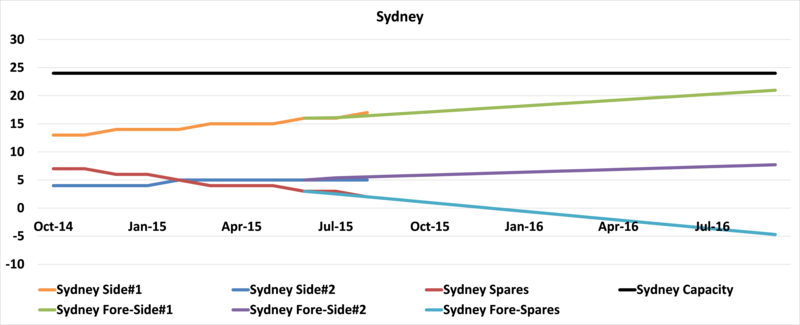+61 413 487 701
info@capprocess.com
CapProcess assists in establishing and improving capacity management (and related processes). This is achieved through implementing processes that identify significant issues to address. Also, through working with your staff and documenting the necessary process changes, we ensure that the improvement continues and is sustained.

The process assessment developed by CapProcess has evolved over 25 years covering several organisations in different industries.
An outsourcing organisation provided service management to the client and wanted to display their expertise – the outsourcer did not want any surprises, such as IT service impacts due to a lack of disk space.
Various sites had low levels of disk space.
There was no systemic approach to data collection and reporting of disk space based on short term usage. Their current tool provided trend (days to 100%) reporting for managing the environment but the forecast date of zero space available varied substantially from day to day.
The client areas had conflicting views – finance delayed approvals on the assumption that such action would reduce costs (as hardware costs reduce over time) without understanding the risks. Other areas wanted to minimise the number of acquisitions (purchases to last three years). The result was analysis paralysis.
Key end-of-month measures were collected and recorded, including total allocated and used (for more than 20 sites). The numbers of spare volumes were tracked and used to compute the reduction in available spare space over time. An actual versus predicted reporting system was created for ease of monthly reporting.
Finally, regular monthly reports were delivered to the client with a documented procedure including instructions on how to operate the spreadsheets and create the monthly reports. We also trained the staff in running the reports.

This project involved the conversion of a key online customer system from windows to UNIX by a client. Millions of customer accounts were at risk. A large software house built the software. The client’s outsourcer managed the hardware. The client wanted confidence that the new system would not suffer from performance issues. The staged conversion migrated the accounts in increasing numbers over a three month period (from an initial pilot of 100 customer accounts through to lots of 250,000 customer accounts at the end).
No project-related reporting existed. The standard vendor monthly report was modified to produce a regular daily report. After the first few migrations the report showed the expected server utilisations based on a ratio of the migrated customer accounts to 100% completion (revised and reviewed after each migration).
It was identified in the first few weeks of the project that the quite sizable database server was not capable of running the planned load, based on current utilisation figures.
We presented the findings and results to the client.
We suggested that the DBAs had not tuned the indexes and recommended that tuning occur before purchasing a larger (twice the size) database server.

The client decided to purchase a larger server (twice the size) without the database tuning.
After the implementation was complete (six weeks later) the reporting showed that the (new twice the size) database server dropped from 75% utilisation to 15% utilisation. The DBAs had tuned the indexes anyway.
But the client was happy – no issues. The client was prepared to spend more than the minimum to guarantee that no issues arose. We had made a recommendation that proved our worth even though the client decided not to follow it. We were right in hindsight, but so was the customer because they could not afford to take the risk.
An outsourcing organisation required a capacity management process to be created to support a new contract. The process was required to be ITIL based.
The outsourcer was the prime contractor and had several subcontractors supporting various areas of the environment. The process documentation was needed for sub-contractor management.
The prime contractor had attempted to create a process document based on the ITIL V3 2011 books. The staff found the documentation disjointed and confusing. The process documentation did not clearly define what was required or the steps for achieving it.
We reviewed the contract information – and identified four key requirements in the contract:
They align with our view that capacity management is a knowledge domain that consists of several processes.
Given that the contractual requirements aligned with our view of capacity management, we produced processes to match. Reporting was broken down into two components, as this was an outsourced environment with subcontractors reporting to the prime contractor. The reason was to separate the reporting from the decision making / escalation process to the appropriate action taker.
Report Capacity - Internal

Report Capacity - External

Audit Capacity Database

Produce Capacity Plan

Produce Capacity Assessment

The five processes were designed to deliver the requirements of the contract. They provide the necessary visibility for mapping and contract signoff because processes must exist for a purpose. They often deliver an artefact that is intended to meet that purpose. They are also easier for the sub-contractor and prime-contractor staff to understand and follow.
The revised documentation and processes were well received by the customer, and the outsourcer was happy that the process provided cost-effective satisfaction of the relevant requirements in the contract.